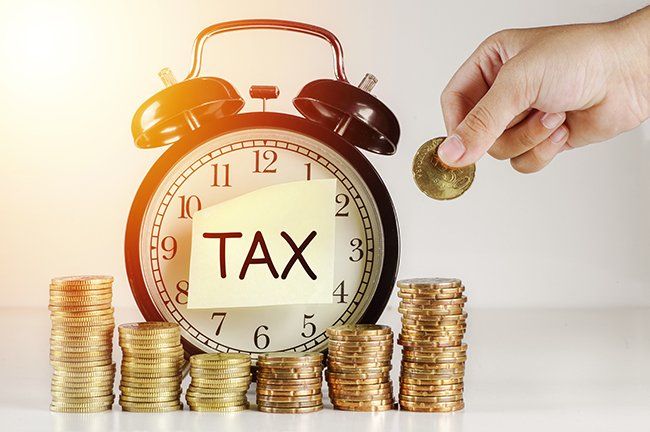Sometime during the month of July several thousand Canadians will receive an unexpected, unfamiliar, and probably unwelcome piece of correspondence from the Canada Revenue Agency. That correspondence will be an Instalment Reminder advising the recipient of tax payments to be made in September and December of this year.
The reason such Reminders are sent during July has to do with how tax is collected in Canada, and when tax returns are filed. Most Canadians, and certainly all Canadians who are employees, have income taxes deducted (or withheld) from each paycheque and remitted to the federal government on their behalf. They then file a tax return for the year the following spring: if they have overpaid taxes they receive a refund and, where taxes were underpaid, they will have a balance owing.
Where, however, a taxpayer receives income from which no tax has been deducted or withheld, the federal government must have another way of collecting the tax owed on such income amounts. And, while it’s possible that such taxpayers could simply pay the full amount of taxes owed for the year when filing the annual tax return, it’s not likely that many individuals would have the financial wherewithal to do so. And, in addition, the federal government is not prepared to wait until then to receive tax amounts owed for the entire year. Instead the instalment payment system is the means by which the Canada Revenue Agency collects such tax amounts, on a quarterly basis, throughout the year.
More technically, an individual is subject to the instalment payment requirement where his or her tax owed on filing for the current year and either of the two previous years is more than $3,000. In other words, the amount of tax collected from that individual throughout the year was at least $3,000 less than the actual tax owed for that year. And, since Canadian tax returns are filed in the spring, the assessment of those returns allows the Canada Revenue Agency to identify individuals who will be subject to the instalment requirement for the current year – and it is those individuals who receive an instalment reminder this month.
Regardless of the type or amount of his or her income for the year, or the amount of any instalment payments, the options available to the recipient of an Instalment Reminder are the same. On its website, the CRA describes the three different payment options open to taxpayers, and outlines the benefits and risks of each option in different circumstances, as follows:
NO-CALCULATION OPTION
This option is best for you if your income, deductions, and credits stay about the same from year to year.
We will give the no-calculation option amount on the instalment reminders that we will send you. We determine the amount of your instalment payments based on the information in your latest assessed tax return.
PRIOR-YEAR OPTION
This option is best for you if your 2019 income, deductions, and credits will be similar to your 2018 amount but significantly different from those in 2017.
You determine the amount of your instalment payments based on the information from your tax return for the 2018 tax year. Use the Calculation chart for instalment payments for 2019 to help you calculate your total instalment amount due.
If you use the prior-year option and make the payments in full by their 2019 due dates, we will not charge instalment interest or a penalty unless the total instalment amount due you have calculated is too low. For more information, see Instalment interest and penalty charges.
CURRENT-YEAR OPTION
This option is best for you if your 2019 income, deductions, and credits will be significantly different from those in 2018 and 2017.
You determine the amount of your instalment payments based on your estimated current-year (2019) net tax owing, any CPP contributions payable, and any voluntary EI premiums. Use the Calculation chart for instalment payments for 2019 to help you calculate your total instalment amount due.
If you use the current-year option and make the payments in full by their 2019 due dates, we will not charge instalment interest or a penalty unless the amounts you estimated when calculating your total instalment amount due were too low. For more information, see Instalment interest and penalty charges.”
Under any of these options, the dates for payment and the percentage amounts payable are summarized as follows:
No-calculation option – Pay the amount shown in box 2 of the Instalment Reminder for September 15 and December 15.
Prior-year option – Determine net taxes owed for 2018. Pay 75% of the total on September 15 and 25% on December 15.
Current-year option – Estimate current-year 2019 net tax owing. Pay 75% of the total on September 15 and 25% on December 15.
The first option – paying the amounts identified on the Instalment Reminder by the September and December deadlines – is the easiest and simplest choice. If the amounts paid represent an overpayment of taxes for 2019, the taxpayer will receive a refund of that overpayment on filing in the spring of 2020. If the amounts identified turn out be an underpayment of tax (in that they are insufficient to cover total tax owed for the year), the taxpayer will have a balance owing on filing. In no case, however, will the taxpayer be charged any interest on insufficient instalment payments.
Taxpayers who don’t wish to pay the amounts specified in the Instalment Reminder (perhaps because they believe that such amounts don’t accurately reflect their tax payable for the year) can use options 2 or 3. The only risk to doing so is that, should the instalments paid be insufficient to cover tax liability for the year, interest will be levied on the underpayments.
More details on the options available to taxpayers who receive an Instalment Reminder, and information on the instalment payment system generally, can be found on the CRA website at https://www.canada.ca/en/revenue-agency/services/tax/individuals/topics/about-your-tax-return/making-payments-individuals/paying-your-income-tax-instalments.html.
No one particularly likes receiving an Instalment Reminder and everyone dislikes paying taxes. It’s worth remembering, however, that the payment of income tax isn’t a choice – the only real choice is whether to pay now, or pay later. And, for most Canadians, paying taxes on a regular basis throughout the year is much more manageable than being faced with a huge tax bill when filing their return for 2019 next spring.
The information presented is only of a general nature, may omit many details and special rules, is current only as of its published date, and accordingly cannot be regarded as legal or tax advice. Please contact our office for more information on this subject and how it pertains to your specific tax or financial situation.

